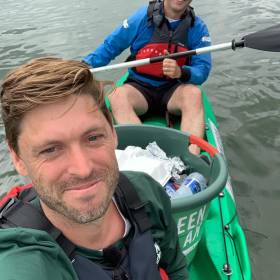Displaying items by tag: Liffey, Dublin
Kayakers Invite Volunteers to Clean Up Liffey
A new clean-up initiative which involves volunteers kayaking down the river Liffey to pick up rubbish has been launched.
GreenKayak, a Danish non-governmental organisation founded in 2017 by Tobias Weber-Andersen, reports The Irish Times, operates a free service where volunteers sign up to kayak along the river in exchange for picking up litter.
The initiative launched its first Irish venture, in partnership with Dublin’s City Kayaking, on Tuesday. It aims to collect plastic from the river Liffey before it reaches the Irish Sea.
Each kayak is fitted with a bin and tools for grabbing plastic bobbing on the water’s surface. Each bin is weighed after docking, and the waste is recycled.
Volunteers must then share their experience on social media to promote the initiative, see related link.
Click here to read more on the background of this initiative





























































